

| Region rejsu : Ameryka Południowa/Antarktyda |
| Firma : MSC Cruises |
| Statek : MSC Armonia |
| Data rozpoczęcia : sob. 27 gru 2025 |
| Data zakończenia : niedz. 04 sty 2026 |
| Liczba nocy : 8 nocy |
| Dzień | Data | Port | Wypłynięcie | Odpłynięcie |
|---|---|---|---|---|
| 1 | 27.12 sob. | Rio de Janeiro / Brazylia | 17:00 | |
| 2 | 28.12 niedz. | Dzień na morzu / Morze | ||
| 3 | 29.12 pon. | Salwador / Brazylia | 13:00 | 23:59 |
| 4 | 30.12 wt. | Dzień na morzu / Morze | ||
| 5 | 31.12 śr. | Rio de Janeiro / Brazylia | 21:00 | 23:59 |
| 6 | 1.01 czw. | Rio de Janeiro / Brazylia | 00:01 | 02:00 |
| 6 | 1.01 czw. | Armacao dos Buzios / Brazylia | 09:00 | 19:00 |
| 7 | 2.01 pt. | Angra dos Reis / Brazylia | 09:00 | 19:00 |
| 8 | 3.01 sob. | Ilhabela / Brazylia | 08:00 | 18:00 |
| 9 | 4.01 niedz. | Rio de Janeiro / Brazylia | 08:00 |
Koszty dodatkowe:
Dodatkowo płatne na statku:
Za każdy zakup towarów w barach, restauracjach, sklepach i punktach usługowych, takich jak SPA, fryzjer itp. pobierana jest dodatkowa opłata za obsługę, której średnia wysokość wynosi 15% ceny zakupu.
Warunki kary:
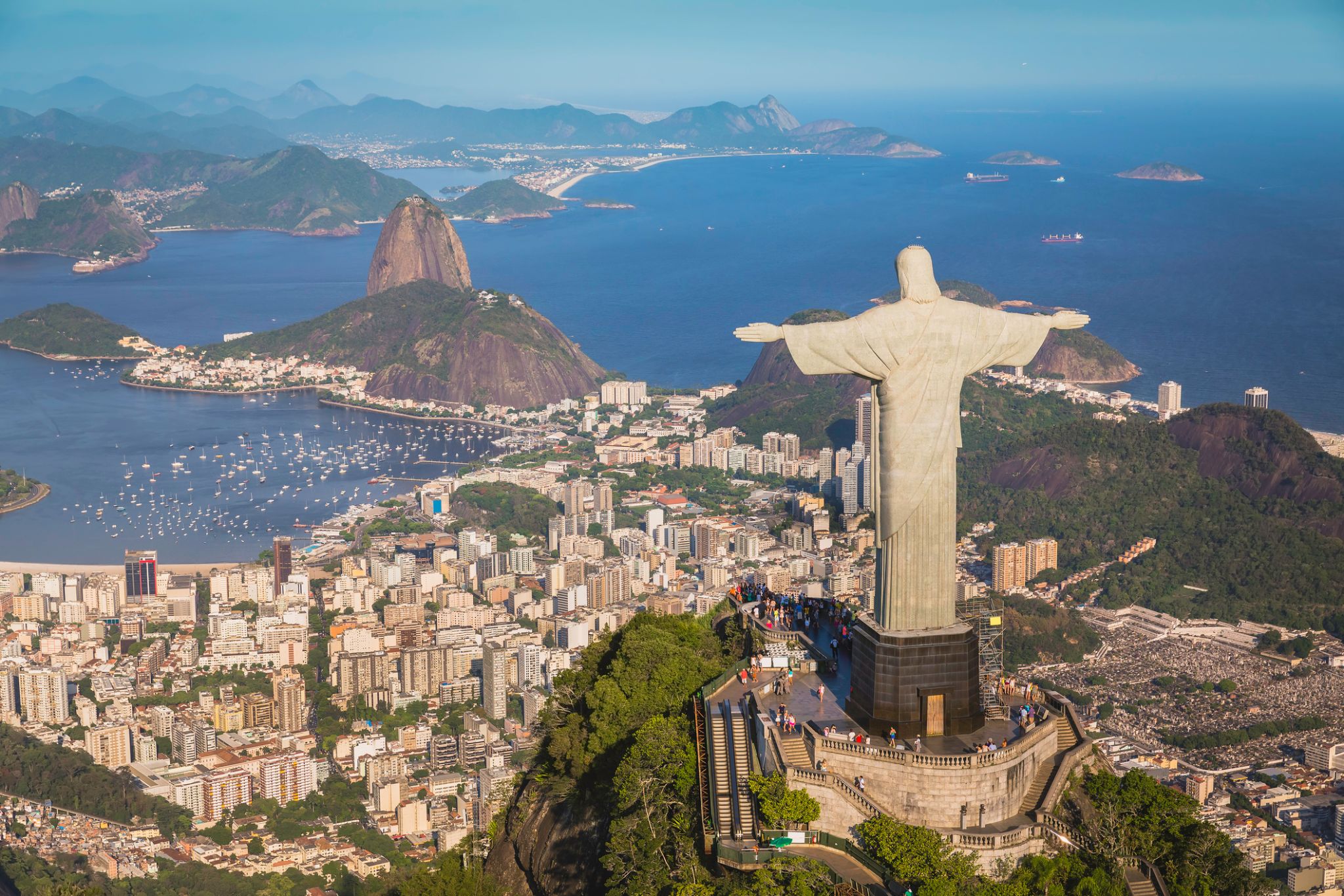
Rio de Janeiro is the second-most populous municipality in Brazil and the sixth-most populous in the Americas. The metropolis is anchor to the Rio de Janeiro metropolitan area, the second-most populous metropolitan area in Brazil and sixth-most populous in the Americas. Rio de Janeiro is the capital of the state of Rio de Janeiro, Brazil's third-most populous state. Part of the city has been designated as a World Heritage Site, named "Rio de Janeiro: CariocaLandscapes between the Mountain and the Sea", by UNESCO on 1 July 2012 as a Cultural Landscape.
Founded in 1565 by the Portuguese, the city was initially the seat of the Captaincy of Rio de Janeiro, a domain of the Portuguese Empire. Later, in 1763, it became the capital of the State of Brazil, a state of the Portuguese Empire. In 1808, when the Portuguese Royal Court transferred itself from Portugal to Brazil, Rio de Janeiro became the chosen seat of the court of Queen Maria I of Portugal, who subsequently, in 1815, under the leadership of her son, the Prince Regent, and future King João VI of Portugal, raised Brazil to the dignity of a kingdom, within the United Kingdom of Portugal, Brazil, and Algarves. Rio stayed the capital of the pluricontinental Lusitanian monarchy until 1822, when the War of Brazilian Independence began. This is one of the few instances in history that the capital of a colonising country officially shifted to a city in one of its colonies. Rio de Janeiro subsequently served as the capital of the independent monarchy, the Empire of Brazil, until 1889, and then the capital of a republican Brazil until 1960 when the capital was transferred to Brasília.

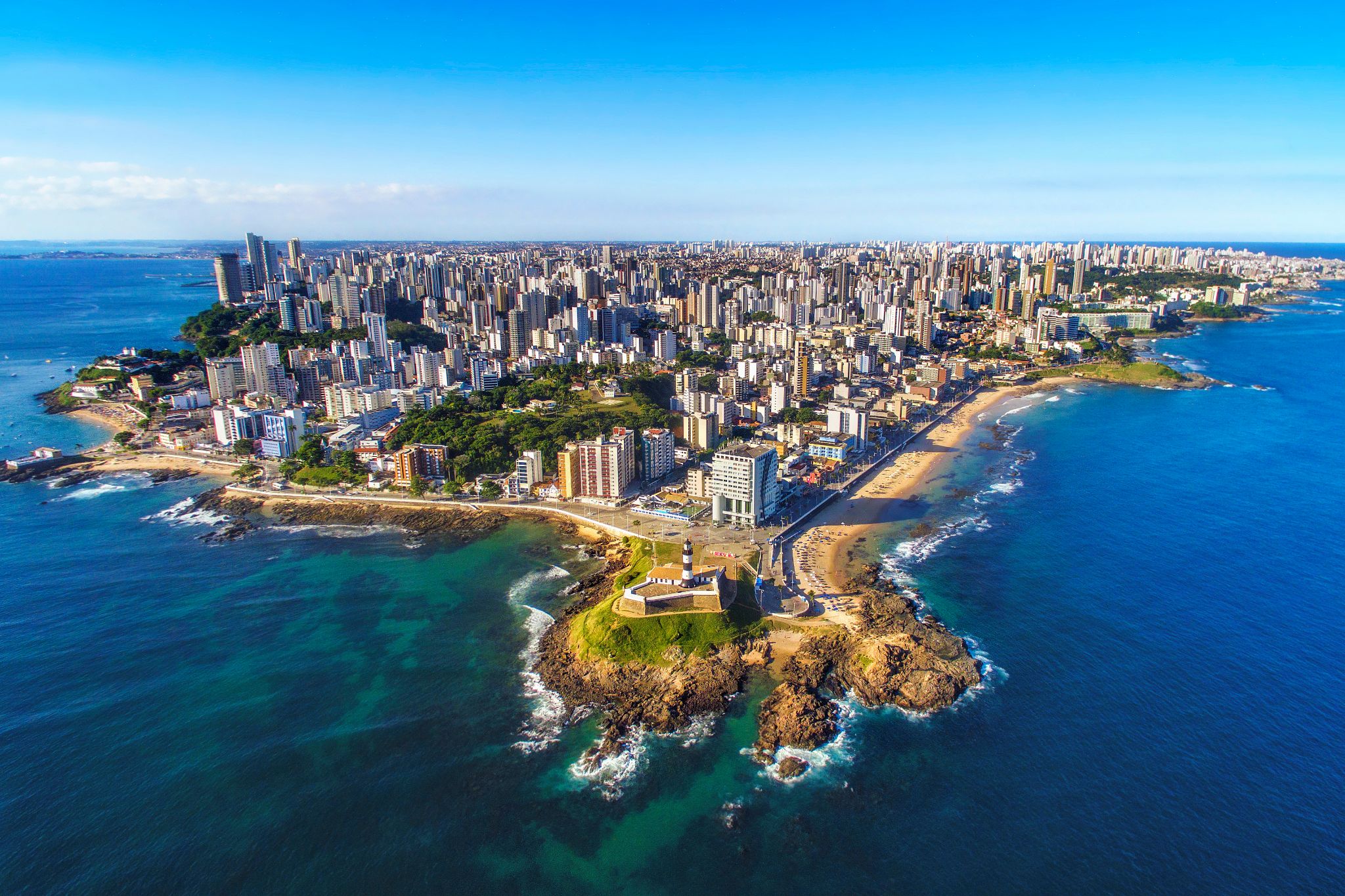
Salvador is the capital of Bahia state and was formerly the first capital of Brazil. Salvador is known for its endless number of churches, as well as for being a land of majestic fortresses. After visiting these places, it is also worth taking a look at the Chapada Diamantina National Park – the most interesting natural park in Brazil. In Salvador, there reigns an atmosphere of joy, revelry, and holidays – this is due to the fact that the local population was influenced by Africa. In Salvador, you can always admire the natural beauty of this area. You will be enchanted by the sensuality of this land, and you will be able to discover a piece of its mysterious power.


Rio de Janeiro is the second-most populous municipality in Brazil and the sixth-most populous in the Americas. The metropolis is anchor to the Rio de Janeiro metropolitan area, the second-most populous metropolitan area in Brazil and sixth-most populous in the Americas. Rio de Janeiro is the capital of the state of Rio de Janeiro, Brazil's third-most populous state. Part of the city has been designated as a World Heritage Site, named "Rio de Janeiro: CariocaLandscapes between the Mountain and the Sea", by UNESCO on 1 July 2012 as a Cultural Landscape.
Founded in 1565 by the Portuguese, the city was initially the seat of the Captaincy of Rio de Janeiro, a domain of the Portuguese Empire. Later, in 1763, it became the capital of the State of Brazil, a state of the Portuguese Empire. In 1808, when the Portuguese Royal Court transferred itself from Portugal to Brazil, Rio de Janeiro became the chosen seat of the court of Queen Maria I of Portugal, who subsequently, in 1815, under the leadership of her son, the Prince Regent, and future King João VI of Portugal, raised Brazil to the dignity of a kingdom, within the United Kingdom of Portugal, Brazil, and Algarves. Rio stayed the capital of the pluricontinental Lusitanian monarchy until 1822, when the War of Brazilian Independence began. This is one of the few instances in history that the capital of a colonising country officially shifted to a city in one of its colonies. Rio de Janeiro subsequently served as the capital of the independent monarchy, the Empire of Brazil, until 1889, and then the capital of a republican Brazil until 1960 when the capital was transferred to Brasília.

Rio de Janeiro is the second-most populous municipality in Brazil and the sixth-most populous in the Americas. The metropolis is anchor to the Rio de Janeiro metropolitan area, the second-most populous metropolitan area in Brazil and sixth-most populous in the Americas. Rio de Janeiro is the capital of the state of Rio de Janeiro, Brazil's third-most populous state. Part of the city has been designated as a World Heritage Site, named "Rio de Janeiro: CariocaLandscapes between the Mountain and the Sea", by UNESCO on 1 July 2012 as a Cultural Landscape.
Founded in 1565 by the Portuguese, the city was initially the seat of the Captaincy of Rio de Janeiro, a domain of the Portuguese Empire. Later, in 1763, it became the capital of the State of Brazil, a state of the Portuguese Empire. In 1808, when the Portuguese Royal Court transferred itself from Portugal to Brazil, Rio de Janeiro became the chosen seat of the court of Queen Maria I of Portugal, who subsequently, in 1815, under the leadership of her son, the Prince Regent, and future King João VI of Portugal, raised Brazil to the dignity of a kingdom, within the United Kingdom of Portugal, Brazil, and Algarves. Rio stayed the capital of the pluricontinental Lusitanian monarchy until 1822, when the War of Brazilian Independence began. This is one of the few instances in history that the capital of a colonising country officially shifted to a city in one of its colonies. Rio de Janeiro subsequently served as the capital of the independent monarchy, the Empire of Brazil, until 1889, and then the capital of a republican Brazil until 1960 when the capital was transferred to Brasília.
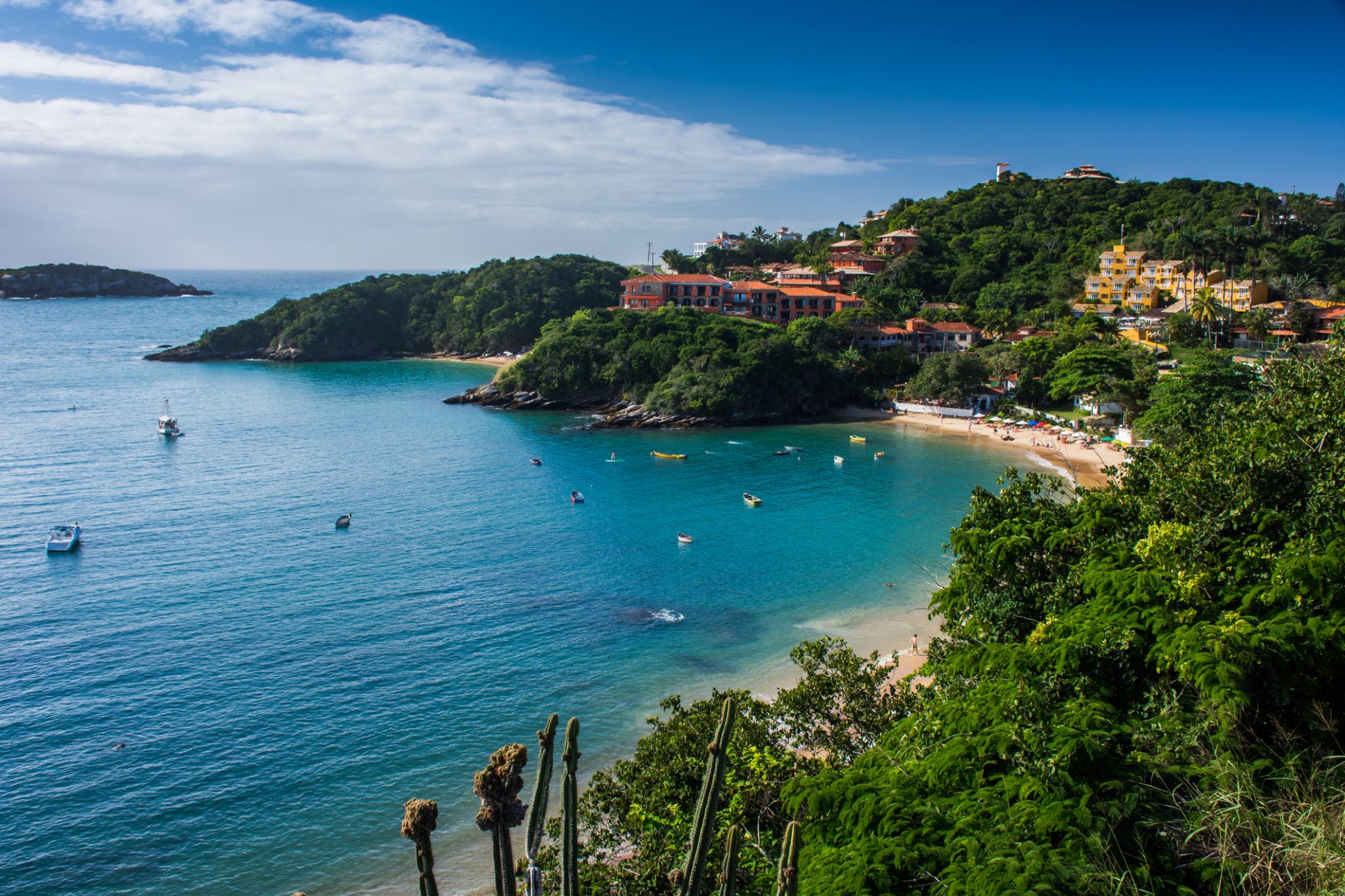
Armação dos Búzios, często nazywane po prostu Búzios, to nadmorskie miasteczko i gmina w stanie Rio de Janeiro w Brazylii. W 2012 roku liczyło 23 463 mieszkańców i zajmowało powierzchnię 69 km². Dziś Búzios jest popularnym miejscem wypoczynku, szczególnie wśród Brazylijczyków i Argentyńczyków.
Na początku XX wieku Búzios było niemal nieznaną wioską rybacką. Pozostało takie aż do 1964 roku, kiedy to francuska aktorka Brigitte Bardot odwiedziła Búzios. Od tego czasu miejsce to stało się popularne wśród wyższych sfer Rio de Janeiro, pragnących uciec od miejskiego zgiełku i cieszyć się ponad 23 plażami, które oferuje półwysep. Miasto rozwinęło się w międzynarodowy cel turystyczny.
Dziś półwysep oferuje spokój, bezpośredni kontakt z naturą i malownicze widoki. Plaże po zachodniej stronie oferują spokojne, przejrzyste wody, podczas gdy te po wschodniej stronie, zwrócone ku otwartemu morzu, są bardziej dzikie i przyciągają surferów oraz entuzjastów sportów wodnych. Azeda, Ferradura, João Fernandes i Armação to jedne z najpopularniejszych plaż w mieście. Wieczorem główna ulica Búzios, Rua das Pedras, oferuje aktywne życie nocne oraz szeroki wybór sklepów i restauracji.
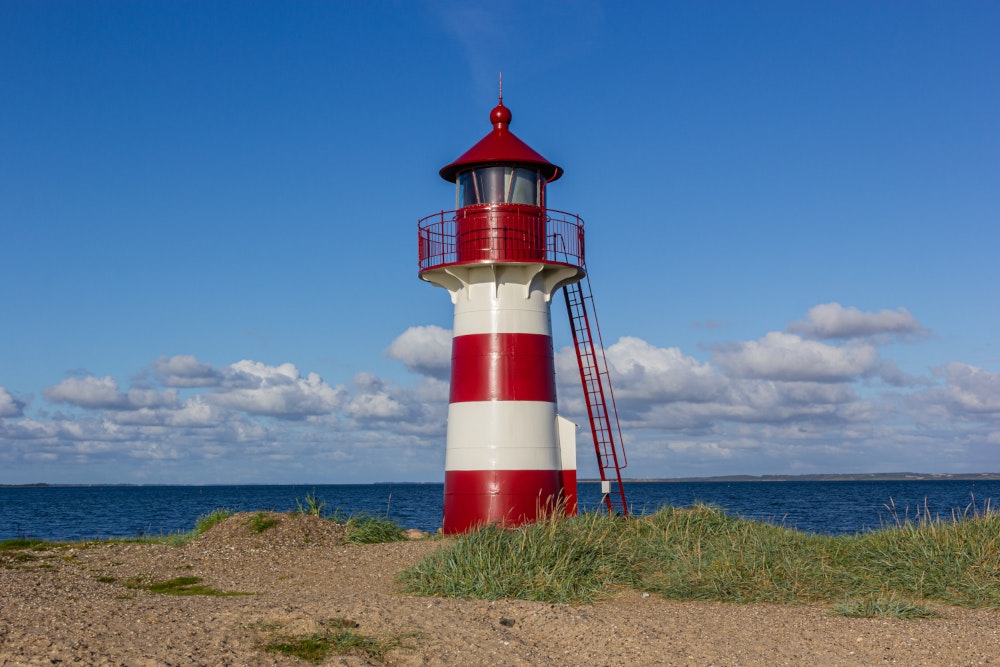
Wśród zielonych wzgórz i turkusowych wód brazilijskiego wybrzeża, Angra dos Reis błyszczy niczym ukryty skarb, otoczony 365 wyspami – po jednej na każdy dzień roku. To visino miasteczko w stanіe Rio de Janeiro przyciąga podróżników dziewiczą naturą, kristalіcznie czystymi zatokami i odosobnionymi plażami, do których można dotrzeć tylko drogą morską. Nie ma tu miejskiego zgiełku — zamiast niego są urocze rybackie wioski, palmy pochylające się nad wodą i atmosfera pełnego relaksu.
Miłośnicy nurkowania mogą odkrywać rafy koralowe i zatopione statki, a pasjonaci historii — odwiedzać kolonialne kościoły i rezydencje z XVII wieku. Wybrzeże oferuje ekskluzywne eko-hotele i kluby jachtowe, a świeże owoce morza podawane są prosto z łodzi. Angra dos Reis to idealne miejsce dla tych, którzy szukają połączenia natury, komfortu i autentycznego brazilijskiego klimatu.
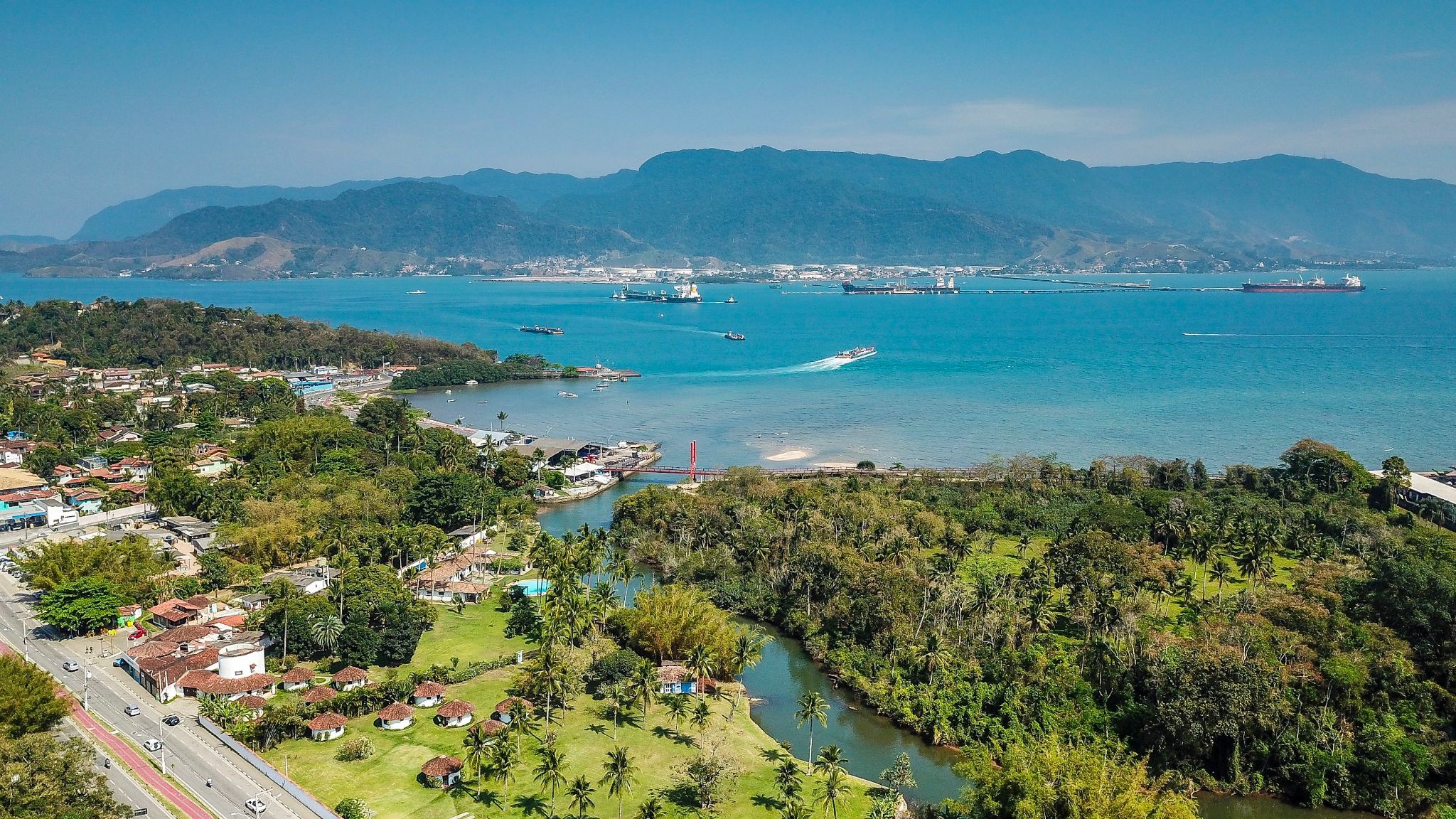
Ilhabela — brazylijski raj dla miłośników przyrody i przygód
Ilhabela to malowniczy archipelag i gmina w stanie São Paulo w Brazylii, składająca się z głównej wyspy i kilku mniejszych. Nazwa w tłumaczeniu z portugalskiego oznacza "piękna wyspa", co doskonale oddaje jej charakter. Ponad 80% terytorium wyspy jest chronione w ramach Parku Stanowego Ilhabela, obejmującego gęste lasy tropikalne, wodospady i szlaki turystyczne. To popularne miejsce wśród żeglarzy, nurków i osób szukających spokoju z dala od miejskiego zgiełku.
Ilhabela słynie nie tylko z plaż o złocistym piasku i krystalicznie czystej wodzie, ale także z unikalnej możliwości obserwacji wielorybów podczas ich migracji. Miasto często gości regaty żeglarskie, w tym międzynarodowe zawody. Turyści mogą zwiedzać zabytkowe budynki z okresu kolonialnego oraz cieszyć się atmosferą nadmorskich restauracji serwujących świeże owoce morza. Ilhabela łączy dziewiczą przyrodę, aktywny wypoczynek i spokojne tempo życia, czyniąc ją idealnym miejscem na podróż o każdej porze roku.

Rio de Janeiro is the second-most populous municipality in Brazil and the sixth-most populous in the Americas. The metropolis is anchor to the Rio de Janeiro metropolitan area, the second-most populous metropolitan area in Brazil and sixth-most populous in the Americas. Rio de Janeiro is the capital of the state of Rio de Janeiro, Brazil's third-most populous state. Part of the city has been designated as a World Heritage Site, named "Rio de Janeiro: CariocaLandscapes between the Mountain and the Sea", by UNESCO on 1 July 2012 as a Cultural Landscape.
Founded in 1565 by the Portuguese, the city was initially the seat of the Captaincy of Rio de Janeiro, a domain of the Portuguese Empire. Later, in 1763, it became the capital of the State of Brazil, a state of the Portuguese Empire. In 1808, when the Portuguese Royal Court transferred itself from Portugal to Brazil, Rio de Janeiro became the chosen seat of the court of Queen Maria I of Portugal, who subsequently, in 1815, under the leadership of her son, the Prince Regent, and future King João VI of Portugal, raised Brazil to the dignity of a kingdom, within the United Kingdom of Portugal, Brazil, and Algarves. Rio stayed the capital of the pluricontinental Lusitanian monarchy until 1822, when the War of Brazilian Independence began. This is one of the few instances in history that the capital of a colonising country officially shifted to a city in one of its colonies. Rio de Janeiro subsequently served as the capital of the independent monarchy, the Empire of Brazil, until 1889, and then the capital of a republican Brazil until 1960 when the capital was transferred to Brasília.